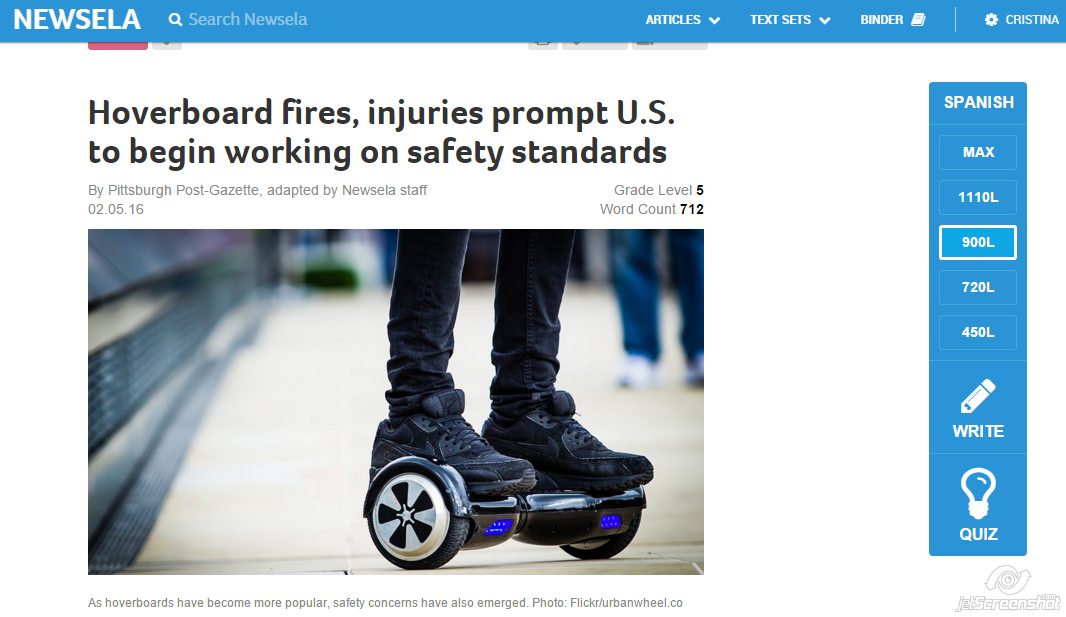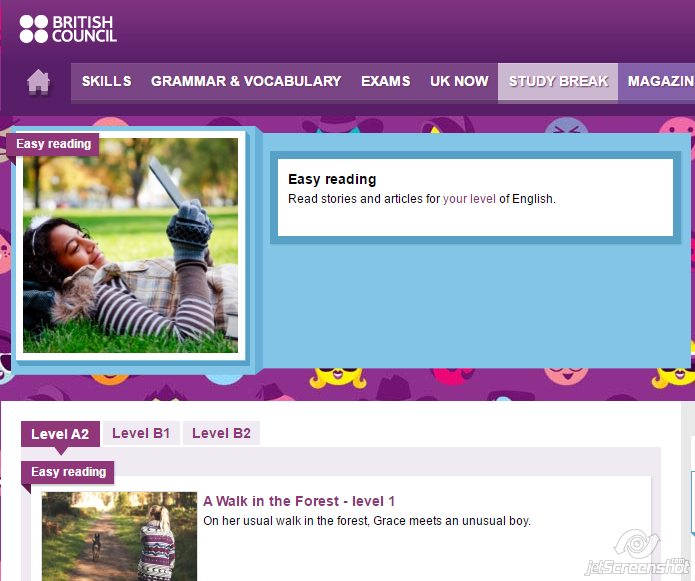It’s been too long since I’ve written about improving reading skills. Last time I posted about sites to help you practise reading comprehension was in May last year. Way too long. The truth is that doing reading comprehension activities in class takes time, especially if we are talking about long texts with an amount of difficulty, and very often this is one of the tasks we give students as homework.

On the other hand, I am one of those teachers who think reading aloud in class is a good exercise. In my opinion,
- Reading aloud fluently not only helps to improve the reading ability, but also oral expression.
- It gives students a chance to focus only on fluency, pronunciation and intonation as they don’t need to worry about grammatical accuracy.
- It gives teachers a nice opportunity to correct pronunciation mistakes.
- It helps students enhance comprehension as pauses should be made in the correct places.
- Reading aloud is especially good for students who don’t feel very confident speaking English in public. It gives them a nice chance to use English in a safe environment and helps them gain confidence.
These are some of the sites I’ve been recommending my students to further practise reading comprehension.They are all completely free.
1. Newsela. Have you already tried Newsela? It’s a really good site to help students become stronger readers while reading current event articles.
I teach different levels, and what I like most about Newsela is that you can give the same news article to all your classes no matter the level. Why? Newsela offers five different levels of the same news item. You just need to choose the levelled version you want to use.
The site also offers a multiple choice exercise to test your comprehension of the article.
Although you have to sign up, the site is free. As a teacher, you can assign articles to students in your classes and monitor their progress. Find out how to do it here .

2. Dreamreader is a free website with more than 500 reading lessons. Every lesson comes with free audio, a free printable worksheet and a free multiple choice quiz.
The site offers 5 categories, but the most interesting ones to help enhance your reading comprehension ability are “Fun English” and “Academic English”. This last category is full of lessons and quiz questions for beginner, low intermediate, intermediate, upper intermediate and advanced students.
3. GCF LearnFree.This is a fantastic site to improve your reading skills. There is a wide variety of topics displayed at the top of the page. Choose the topic you want to read about and then at the bottom, select the kind of exercise you want to do. If you want to practise reading comprehension, select “Text” and then from the two options offered, choose “Reading Comprehension”.
The site is very visual and user- friendly and I highly recommend exploring all its possibilities.

4. Easy reading.
This is a section of the British Council especially aimed at teens though I have often used it with adults with great success, too. Here, you can read stories and articles written at three different levels A2 (elementary), B1 (intermediate) and B2 (upper-intermediate).
After the reading test, you can do an online interactive multiple choice exercise to test your comprehension and a grammar exercise based on the text. The site also gives you the possibility of downloading the text and the activities.

5. Literacynet. Aimed at adults with an advanced level of English, it offers texts on a variety of subjects.
Select a topic and the piece of news you want to read. Click on “Story” and then from the menu on the left, choose the activity you want to do. There are five comprehension activities.
6. Teaching Kids News is a very interesting site that offers original news articles on topics that are “timely, relevant and intriguing”. Though it doesn’t offer the standard type of comprehension exercises you normally find in English exams, each article includes Writing/Discussion Prompts, Grammar Features, and a Reading Prompt.
Hope you find these sites useful!
Blog de Cristina is also on Facebook. Follow us!








